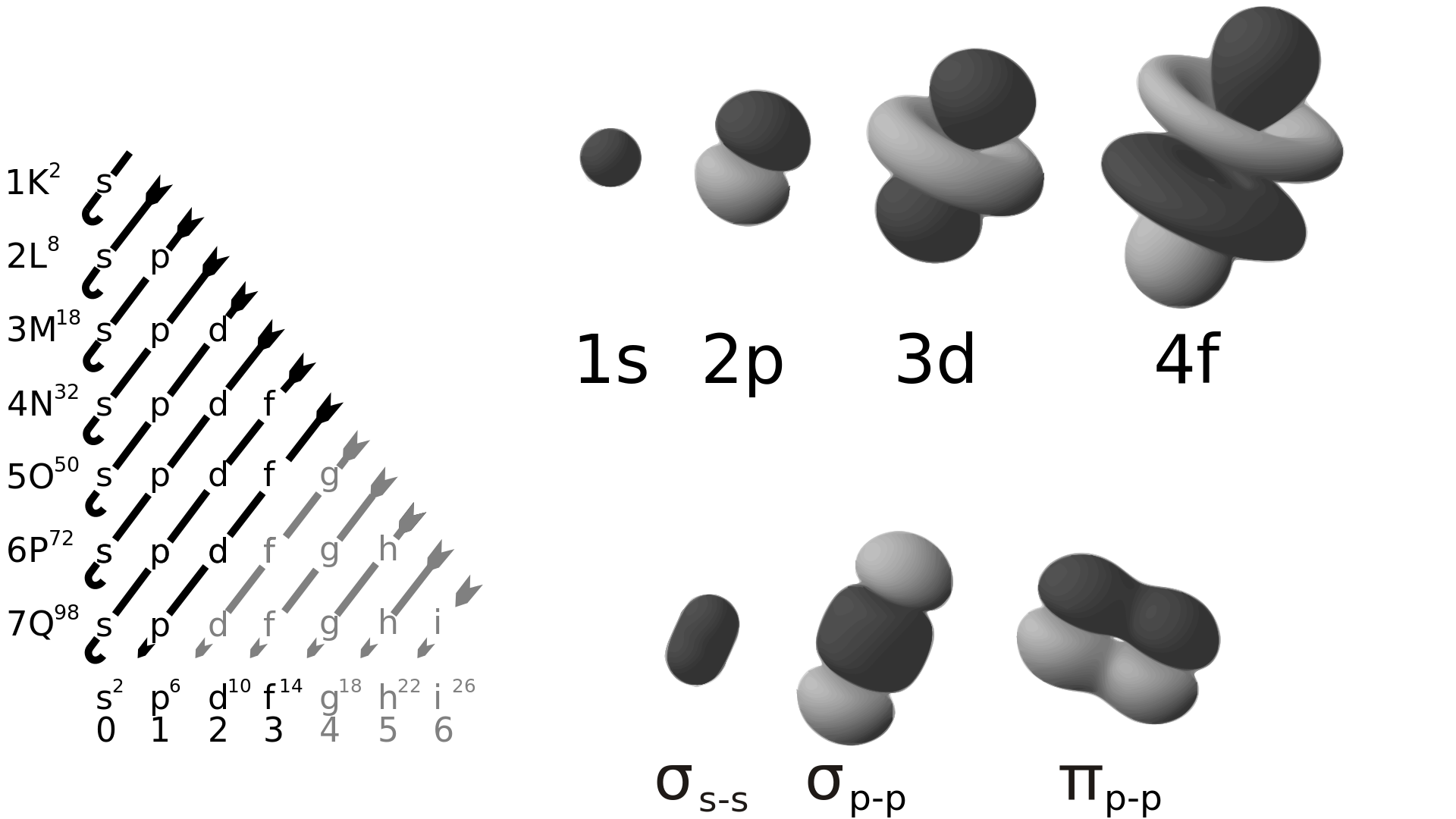为什么金的基态原子态不是5d9 6s2,而是5d10 6s1?
为什么金的基态原子态不是5d9 6s2,而是5d10 6s1?
The expected electron configuration for gold is is [Xe] 6s2 4f14 5d9 but it has been determined to be [Xe] 6s1 4f14 5d10. How could this be?
Your “expected” electron configuration is only expected if you believe that all the rules of the Aufbau process and Hund’s rules should be followed all the time. Once you get up to larger elements like d-block and f-block elements, the outermost energy levels are all really very close together. In Au, the energy difference between 6s, 5d and 4f are very small and other tiny perturbations in the system will allow electrons to jump from one to another.
In any atom, there is an extra bit of stabilization possible when a subshell of the atom is either exactly filled or exactly half filled. In either of these two states, the atom gets to throw away just a bit more energy.
In the lower levels, like in Carbon, Nitrogen, Oxygen atoms by themselves, we don’t see things like electrons transferring easily between the s and the p because there is too big an energy gap between those two. So, a carbon atom (not a carbon in a compound, just a carbon atom all by itself in space) will have a ground state of 2s2,2p2 and will only become 2s1,2p3 (half filled) if it is in an excited state. Similarly, Fluorine’s ground state is 2s2,sp5 and it will be in an excited state if you find an F in the state 2s1,2p6, even though this is a perfectly filled p-shell. That’s because the energy needed to promote an electron from the 2s to the 2p is bigger than energy savings you get from achieving a half-filled (p3) shell or a filled (p6) shell.
Nitrogen, on the other hand, will already be in a half-filled p state, 2s2,2p3 and compared to O (p4), there are a few interesting trends. The ionization energy of N is actually a bit higher than O, bucking the trend of increasing ionization energy as you move from left to right on any row. This is because the N has a half-filled p shell whereas the oxygen has one more than half filled. That makes it easier for the O to lose it’s first electron than the N. That’s counter intuitive at first glance, even though the O is more electronegative.
In the transition metals, the difference between the d shell and the next higher s shell is very small. Thus, the energy needed to promote an electron from the s to the d is less than the extra bit of stability (meaning it has a lower energy) you get if you can achieve a half-filled d shell (d5) or a filled d shell (d10).
So, let’s start a bit lower in the periodic table than gold. Consider Cr; if you only follow Aufbau, and Hund, would have a (valence shell) configuration of 4s2, 3d4. But, two things. 1. the energy difference between the 4s and the 3d is very small. 2. if you move an electron from the 4s to the 3d, you are actually moving to a lower energy version of the atom because although it costs a tiny bit to move it from 4s to 3d, you get back more in stabilization because by doing so, you are forming a d5 configuration (half filled). So, the ground state of Chromium is actually 4s1, 3d5. Similarly, copper, is NOT 4s2,3d9 but instead it is 4s1,3d10, a filled d shell is more stable than an almost filled one.
In the case of gold, it’s also a d9 element, like copper. If you only follow Aufbau and Hund, we would think it should be 6s2,5d9 (ignore f, it’s filled). Instead, the ground state is actually 6s1,5d10 because the filled (5d10) shell is more stable than the almost full 5d9 shell and the tiny cost of moving the electron from the 6s to the 5d is negligible compared to the energy savings of having a perfectly filled d10 configuration.
So, the simple rules to follow:
Any d4 should be converted to a d5 by promoting one s electron.
Any d9 should be converted to d10 by promoting one s electron.
There are many other exceptions to the Aufbau/Hund rules as you get higher up in the electron configurations and it’s all because the difference between the energy levels gets smaller and smaller as you get to higher energy levels. This one is the only exception that I teach (as a rule).
人话:
6s 4f 5d,到这个层次的时候,这几个能级能量差异极低。
电子排布 6s1 - 6s2 所需的能量略大于 5d9 - 5d10,所以电子应首先塞满 5d10 而非 6s2;
类似的还有Cr、Cu,他们的排布也应遵循能量最低原则,而非仅仅只有泡利不相容原理。
附:
洪特定则
-
对于一个给定的电子排布形成的一组原子态,自旋多重度 2S+1 最大的能量最低。其中 S 为总自旋量子数,因此也可以表达为总自旋量子数最大的能量最低。
-
总自旋量子数 S 相同时,总角量子数 L 最大的能量最低。
多电子原子 电子状态准则
-
泡利不相容原理;
-
能量最低原理。
原文来自quora,Michael Mombourquette 的回答:
也可以在问题下找到他的回答:

 遵循泡利不相容原理、能量最低原理的基础上,仍然需要遵循洪特定则。5d10 6s1 的能量较 5d9 6s2 的低,且洪特定则说明了这一点,故金原子的基态电子组态为 [Xe]6s.
遵循泡利不相容原理、能量最低原理的基础上,仍然需要遵循洪特定则。5d10 6s1 的能量较 5d9 6s2 的低,且洪特定则说明了这一点,故金原子的基态电子组态为 [Xe]6s.

 浙公网安备 33010602011771号
浙公网安备 33010602011771号